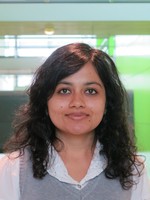
Group leader: Prof. dr. Arie den Boef
Computational Imaging
Is it possible to use relatively simple optics to make fast, high quality images for metrology applications with sub-nanometer precision? This is the main challenge the ARCNL related Computational Imaging research activity at VU Amsterdam tries to tackle.
Computer chips consist of tens of different structured layers. The performance of the chip is for an important part defined by the quality of patterning steps like lithography and etch. Chip manufacturers use so called optical metrology techniques to measure and control the quality of these patterning steps to sub-nanometer levels. As the patterns continue to get smaller, the quality of the optical metrology also needs to improve.
With the aid of computational imaging, it might be possible to improve optical metrology without the need to use expensive and high-quality optics. In this approach the optical sensor produces imperfect images and smart algorithms are used to correct for the image imperfections that are introduced by the optical components inside the sensor. The research is focused on answering questions like: What signal to noise ratio is needed to obtain good quality images? Which algorithms are sufficiently accurate and fast enough? Which measurement configuration should be used? And what are the best possible light sources?
Since this technology has implications for all areas where it is useful to improve imaging quality, the group closely cooperates with other groups like the Biophotonics and Medical Imaging group at VU Amsterdam.
Prof.dr. Arie den Boef heads the Computational Imaging group at VU/ARCNL. Den Boef is a Senior Fellow of ASML and an extraordinary professor in Amsterdam.













